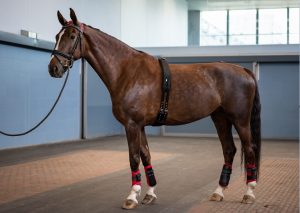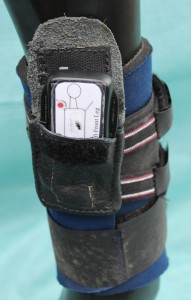EquiMoves – equine gait analysis
Every horse has its own natural movement characteristics, such as stride duration, speed and stride length. Traditionally, scientists had been able to evaluate the movement of horses visually. But the human eye is only capable of registering images with a frequency of 20 Hz. This makes the human capacity for assessment insufficient in order to arrive at a consistent and objective evaluation of the functioning of the horse’s locomotor system, especially when diagnosing lameness – much less when predicting a horse’s performance.
The EquiMoves system uses Inertia’s sensor nodes as mobile measuring units attached to the legs of the horse, the withers and the head. The movement coordination, temporal and spatial gait parameters are extracted from the signals retrieved in all gaits of the horse. The analysis quantifies scientifically the differences between horses but also response on training, shoeing, nerve blocking, medication, etc.
Data collection and analysis
Data has been collected from various types of horses instrumented with waterproof inertial measurement units on the legs, the withers, the pelvis and the head. Each node was attached using a custom made holster, see figure below.
The sensors were set to a sampling rate of 200Hz, with the low g accelerometer set at ± 16g and the high-g accelerometer set at ± 200g. The data was wirelessly transmitted to a router and also stored using the internal memory of each sensor.
The accurate and precise detection of the stride parameters is a crucial prerequisite for the proper determination of temporal and spatial stride characteristics. Using various custom-built algorithms, we determined the relevant 3D motion parameters for assisting the researchers and veterinary practitioners in early detection of lameness in horses.


